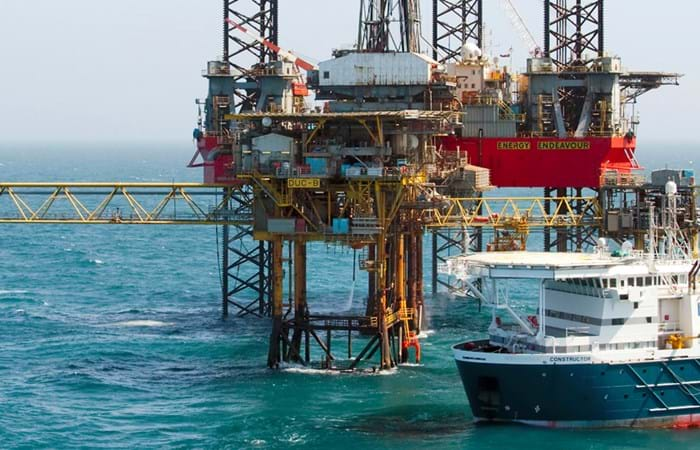Boskalis Offshore was awarded a contract by Maersk for the DABRAT project, involving both the preparation and construction work to the Dan A and Dan B offshore oil production facilities. The extensive scope not only included the subsea installation and removal work, but also fabrication of structural items, procurement, setting up and testing of lift equipment and structural examinations. The works covered the years 2013 and 2014.
The oldest Maersk Oil field, Dan Bravo, is located in the Danish sector of the North Sea. The first platform in the complex was installed in 1972. The complex consists of platforms A, B, C and D. The Dan B platform forms the production hub of the Dan Bravo Complex and Dan A platform is one of the wellhead platforms at the Dan Bravo complex. Maersk Oil decided to carry out a platform lifetime extension program for the forty year old jacket structure to extend the service period of the structure until 2042.
General summary of the work scope
- Reduce sea wave load unto the jacket structure by removing old boat fenders and pump caissons.
- Inspection history enhancement by investigating all available inspection data, searching for known cracks in the subsea structure and inspecting potential problem areas.
- Remove crack or damaged areas and replace with new structure (e.g. conductor guide level).
- Reinforce subsea structure by adding retrofit (clamped) structures to strengthen key areas.
- Renew consumables by retrofitting additional anodes by means of clamps due to depletion and removing some of the original anodes.
The 2013 offshore campaign started in July and was completed in September. During this campaign Boskalis performed the 3D subsea photogrammetry activities, classified as world’s largest ever undertaken, by air/saturation diving and ROV operations acquiring exact geometrical information of subsea K-joints to be able to design reinforcement clamps. Operations were performed on depths varying from 10 to 41 meters. Besides the technical challenges the environmental conditions as sea-state, fog and subsea reduced visibility (minimum 2 meter required for image taking) dictated the progress of the work.

